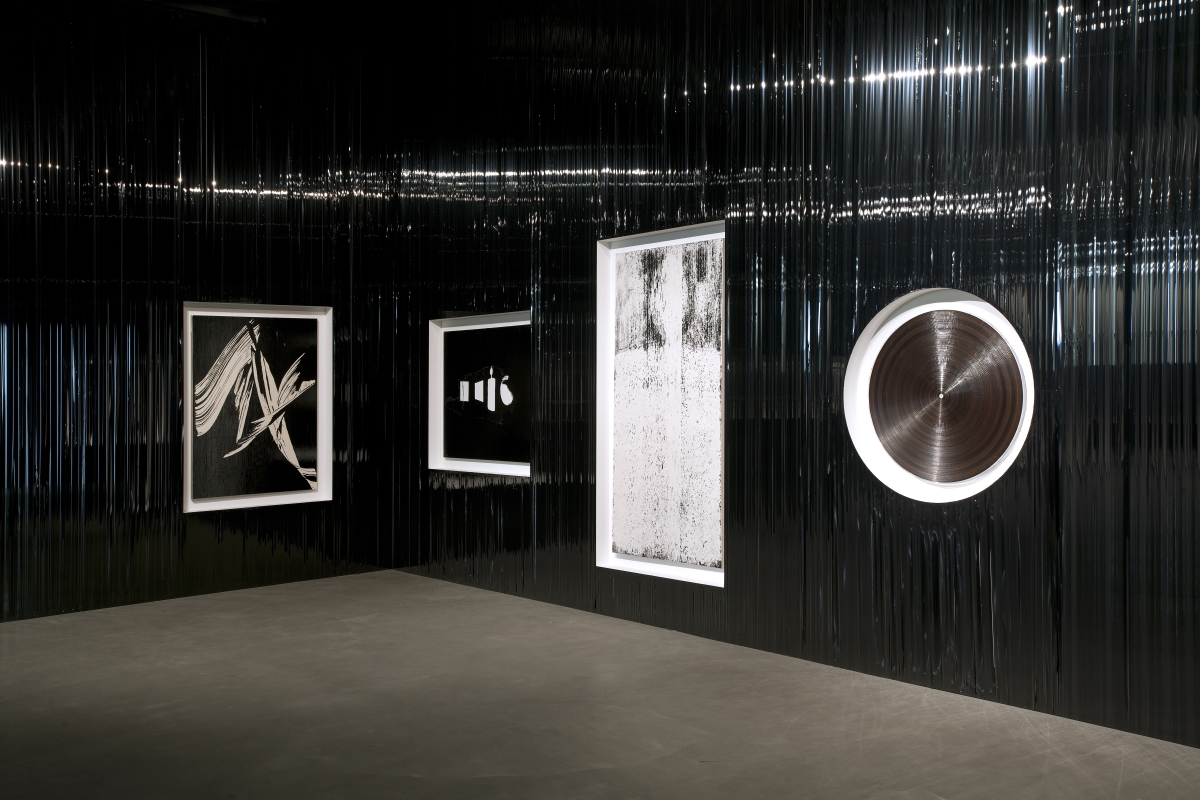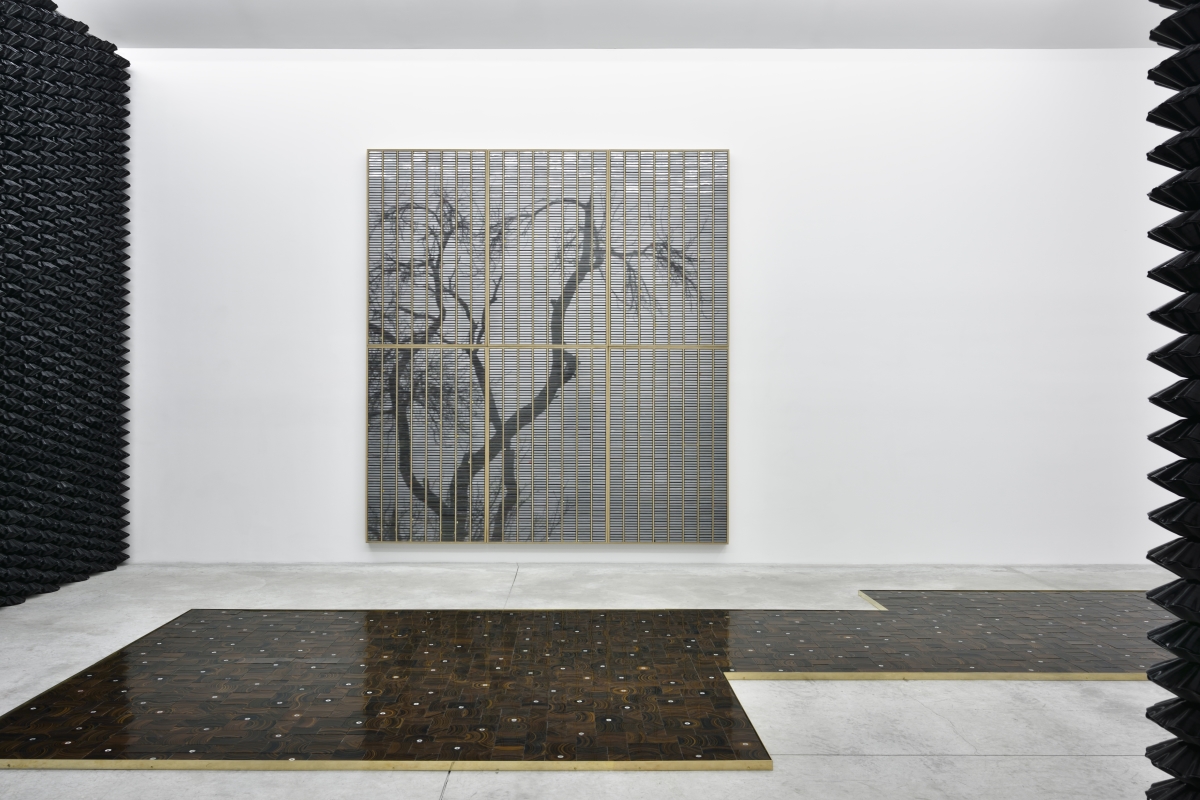
Artist’s Biography
Gregor Hildebrandt, born in Bad Homburg, Germany, in 1974, is a Berlin-based conceptual artist known for his transformative creations using obsolete recording technology. Hildebrandt is a professor for Painting and Graphics at the Academy of Fine Arts in Munich since 2015. His artistic practice encompasses sculptures, paintings, photographs, and installations, all of which blend artistry with a deep sense of nostalgia.
Inspired by music, cinema, and underground culture, Hildebrandt’s goal is to evoke personal and collective memories through his art. His works captivate viewers by masterfully incorporating analog recording media, such as vinyl records, VHS tapes, laser discs, and audio cassettes. Each artwork features prerecorded materials, often referenced in their titles, carefully selected to trigger emotional responses and collective memories within the audience.
Despite the absence of sound within exhibition spaces, Hildebrandt’s artworks possess a captivating intensity. Acting as repositories of pop-cultural memories, they contribute to the formation of individual and collective identities. Through his unique fusion of art and nostalgia, Hildebrandt creates a remarkable quality that extends beyond the physical components of his works.
Within his artistic practice, Hildebrandt explores the sensual qualities of unreeled tapes, skillfully transforming their black or gray coating into a form of painting. He embraces the boundless possibilities offered by his chosen materials, allowing them to dictate their own inherent laws. By infusing his artwork with a sense of time, place, and storytelling, Hildebrandt transports viewers into a realm where art and memory seamlessly intertwine.
Hildebrandt’s solo exhibitions have garnered critical acclaim, including “A Blink of an Eye and the Years Are Behind Us” at Kunsthalle Praha, Prague (2022), “Wo Du mich liebst beginnt der Wald” at Perrotin, Shanghai (2022), and “Im Sturz durch Raum und Zeit” at Mies van der Rohe Haus, Berlin (2021). His works have also been featured in group exhibitions such as “Re-inventing Piet. Mondrian and the Consequences” at Wolfsburg Museum (2023) and “Landscape of desire” at the 4th Industrial Biennial, Croatia (2023).
Hildebrandt’s contributions to the art world extend beyond his individual practice. He curated numerous group exhibitions and has been running the project space Grzegorzki Shows since 2017. Furthermore, together with his partner, the artist Alicja Kwade, Hildebrandt co-founded Grzegorzki Records in 2018, a label that explores the intersection of art and music.
His works have found their place in esteemed collections worldwide, including the collection of Centre Pompidou in Paris, the Contemporary Art Collection of the Federal Republic of Germany, the Martin Z. Margulies Collection in Miami, and the Burger Collection in Hong Kong.
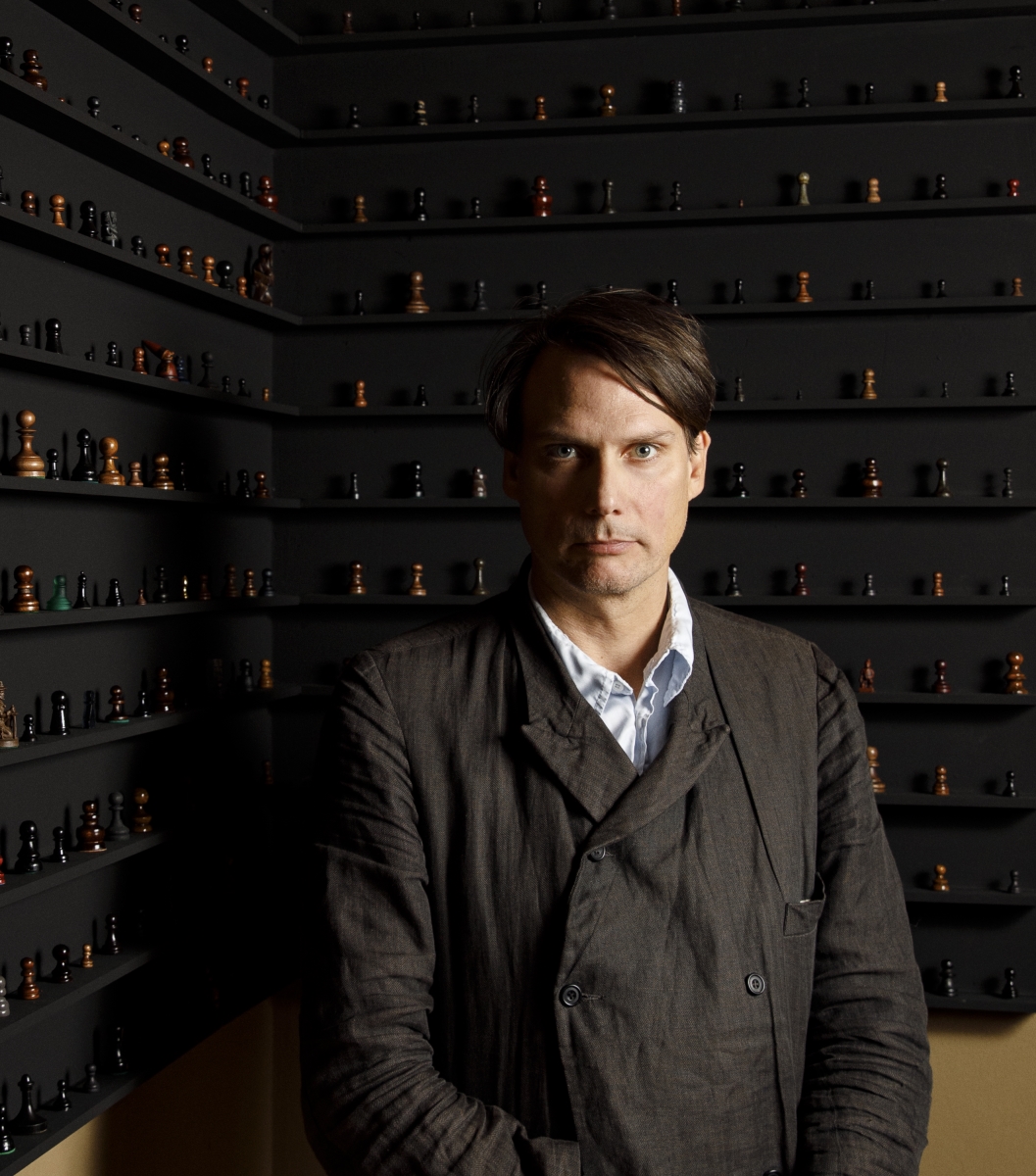 Portrait of Gregor Hildebrandt . Ph Peter Rigaud
Portrait of Gregor Hildebrandt . Ph Peter Rigaud
Interview Artist
Gregor Hildebrandt
By Carol Real
When did you realize that you wanted to be an artist?
While I was still in school, I decided to pursue a career as an artist. My academic grades fell short, to say the least, and it became evident that graduating from high school might not be within reach. However, at the same time, painting and art provided me with a nurturing outlet to bolster my self-esteem and a safe space to express myself in a lyrical and poetic manner. Painting, in Germany at least, can be studied without a high school qualification, if you have special talent.
I’ve painted since I was a child. In kindergarten, we created hidden images by drawing landscapes with colored wax crayons, which were then covered in black. Afterwards, we would use a scraper to define the final image and the initial colors would shine through. Known as sgraffito, this technique eventually became a motif in my later work.
Who are the artists who have influenced you?
Francis Berrar and Thomas Gruber were influential even before I studied at university. I got to know them at a summer academy I attended while in high school. They both lectured there. In 1992, during my schooling, I interned with Thomas Gruber, a stage designer. I then studied with Friedemann Hahn in Mainz and later with Dieter Hacker in Berlin until 2002. The artists I admired at that time were René Daniëls, Olav Christopher Jenssen, Heimo Zobernig, Lothar Baumgarten and Rebecca Horn.
When I came to Berlin at the end of the 90s, there was a lively atmosphere and a feeling of change and transition. Artists from everywhere came to Berlin. In ’98 there was the first Berlin Biennale and it felt like everyone was there. Katja Strunz, who I knew from her studies with Friedemann Hahn, was with Anselm Reyle at the time. He ran the exhibition space, Montparnasse, with Dirk Bell and Thilo Heinzmann. Thomas Zipp, among others, also exhibited there.
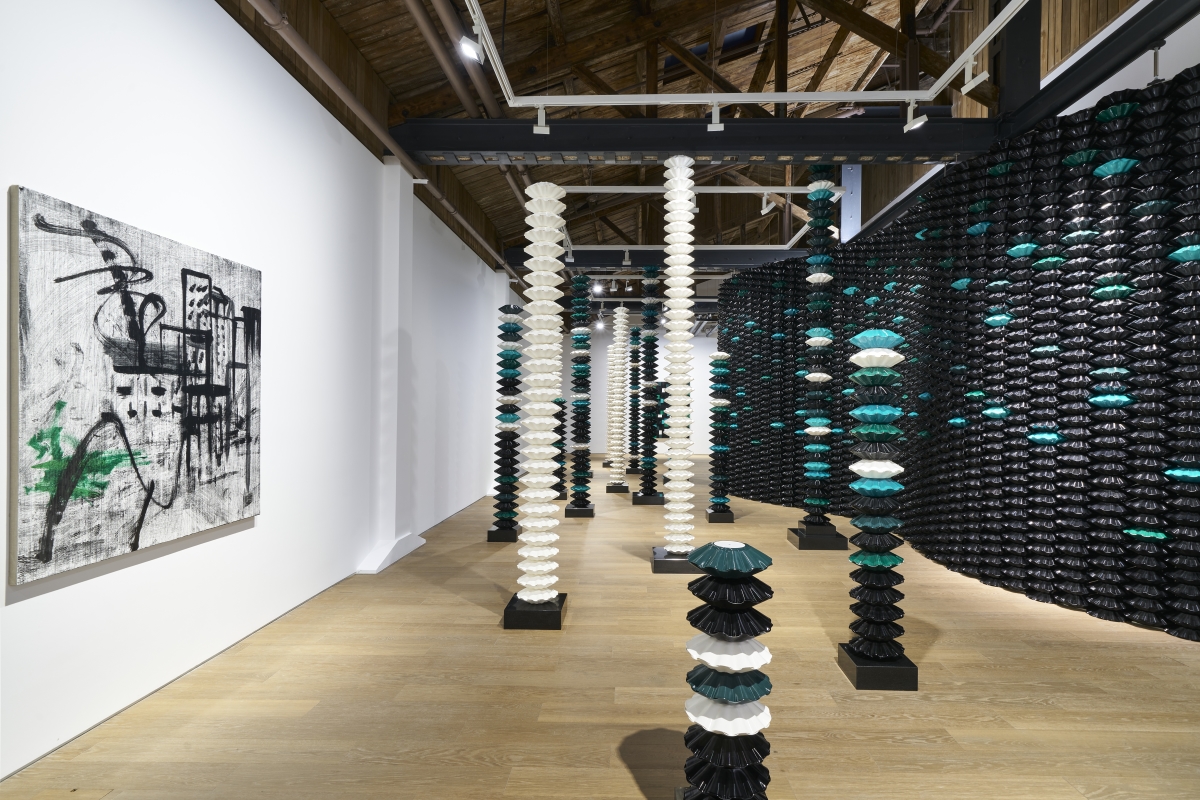
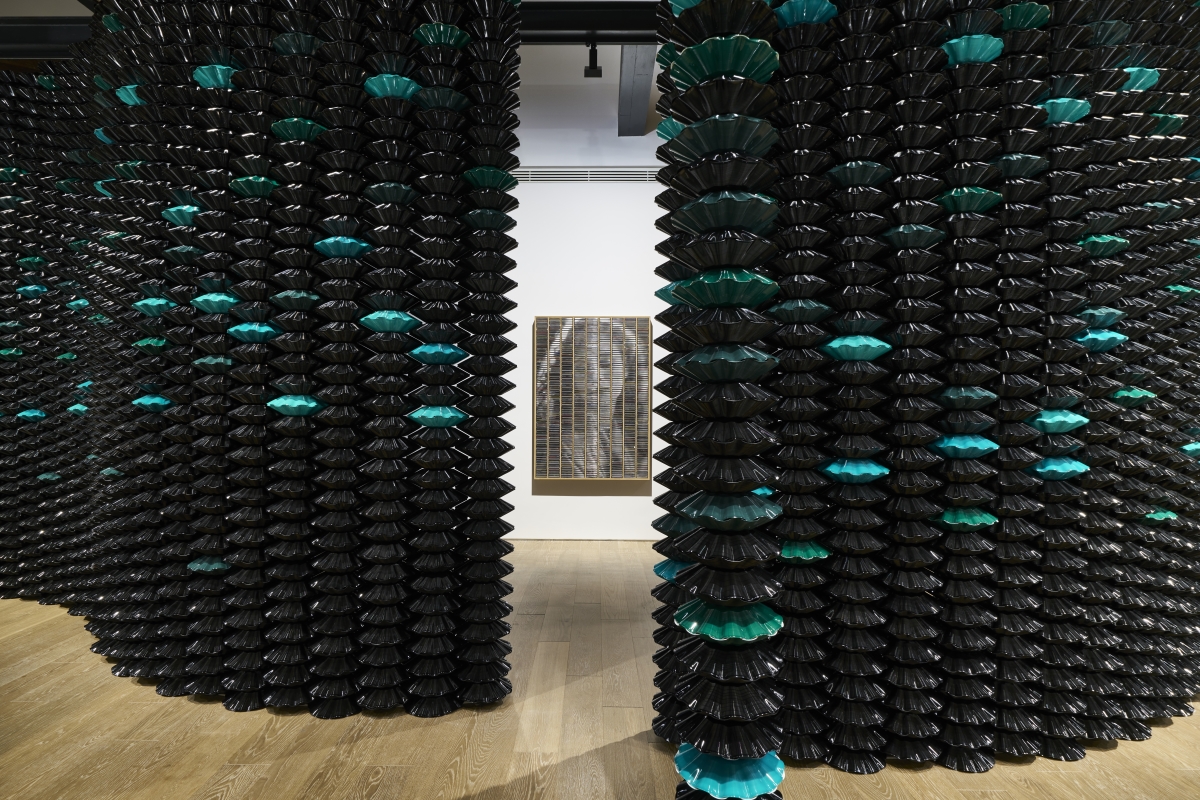
What is your creative process?
Since the late 90s, I have pursued the concept of “cassette tape collages.” To create these works, I overdub cassette tapes, always using the same tape according to the length of tape I needed to cover the canvas. I found motivation and enthusiasm within my imagination; always searching and looking for motifs and points of connection.
I am currently working on a series of mosaic-like assemblages with colored records based on patterns from terrazzo floors. The inspiration for this group of works comes from the concentrated view of looking downwards—as stated in “Von den Steinen zu den Sternen” (From the Stones up to the Stars), which was the title of my first show in 2005 at the gallery Wentrup. This concept stems from a novel by the Dutch writer Nescio (1882-1961)
What significance do color, texture, and sound have in your work?
The color, particularly since I started working with cassette collages, is determined by the color of the cassette or the tape itself. The audio cassette tapes have a wide range of shades—from light brown to deep black. Leader tape, which I refer to as tape starters, comes in a variety of colors, with green and purple being the rarest. However, it was only in 2015 that color started to appear more prominently in my work. That year, I created a floor installation using countless cassette tapes arranged in an “end-grain parquet” motif, replicating vinyl record-like discs. As the leader tape colors were not visible or distinguishable in the mass of tapes, I collected them during the process and kept them for future use. This was one of the initial steps that introduced color to my work.
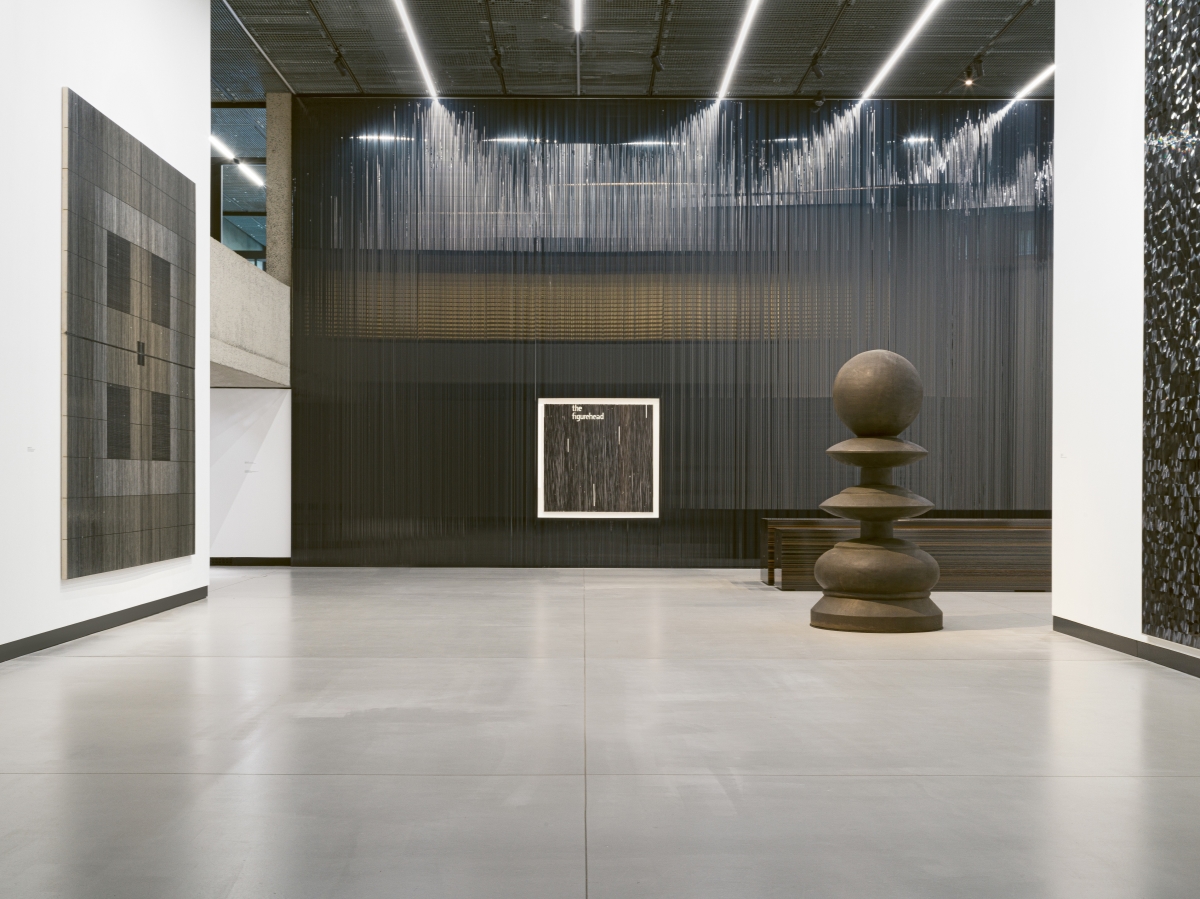

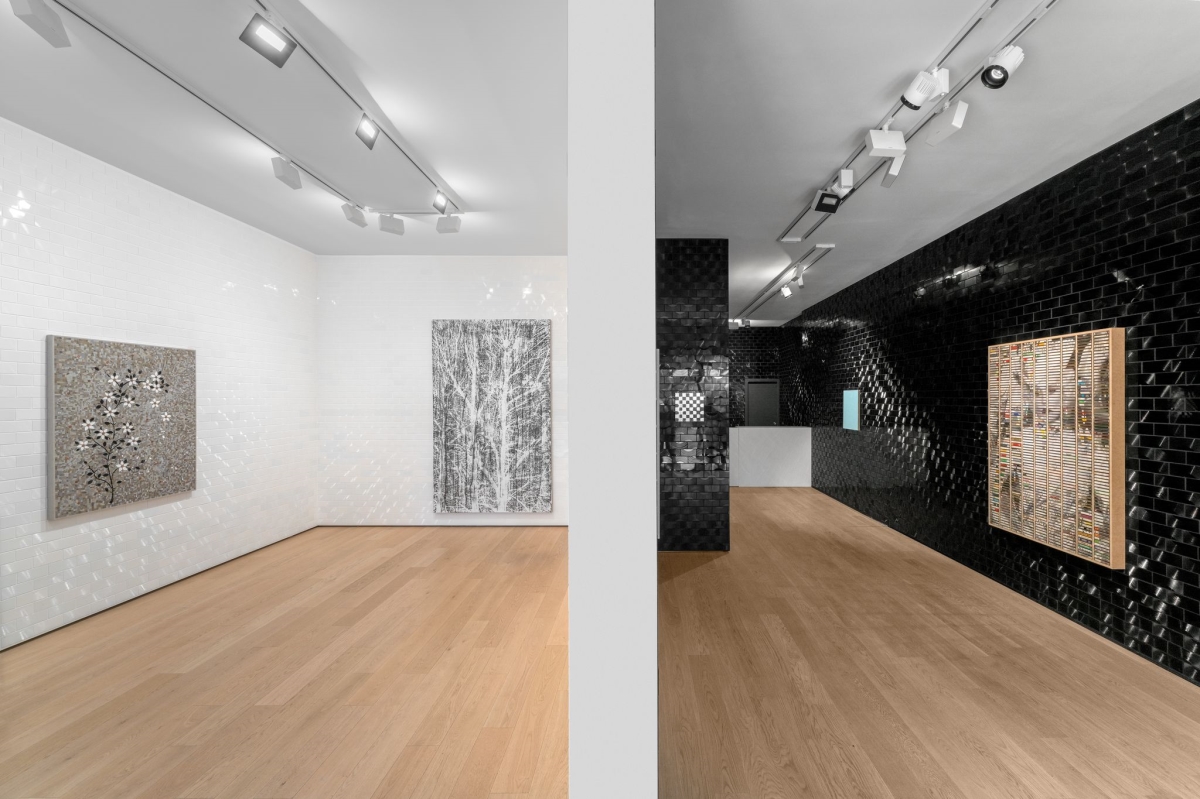
Your styles are varied and distinctive. Can you describe your creative process that guides an idea from its inception to its completion?
For an exhibition, I typically consider the specific location where it will take place. The physical setting simultaneously restricts and broaden my range of possibilities. For instance, I covered the walls of the ground floor at Almine Rech Gallery on Avenue Matignon in Paris with tiles made from vinyl records. Such a complex work may not have been feasible in a small space. The final focus point is always the exhibition itself.
How has your work changed over the last ten years?
My work has evolved gradually. Initially, I created cassette tape collages with tape markings, and later I developed tape collages with cut-outs. Around 2009, I started working on what I call the “rip-off paintings.” The first colored leader tape collages, as I mentioned earlier, emerged in 2015, and a year later, I incorporated cut vinyl records into the repertoire of my paintings. Since then, the series of vinyl record paintings has undergone several transformations, leading to the terrazzo paintings I create today.
Describe your studio practice. Do you follow any rituals when working?
When I arrive at the studio, I start by having a coffee and playing chess online, followed by a brief indulgence in social media. I have another coffee and review my emails and messages. I also drink plenty of water. For every exhibition, I build a 20:1 scale model of the exhibition space. It is crucial to establish the right size for the works from the start. With a stroke of luck and the right song, the creative process begins.
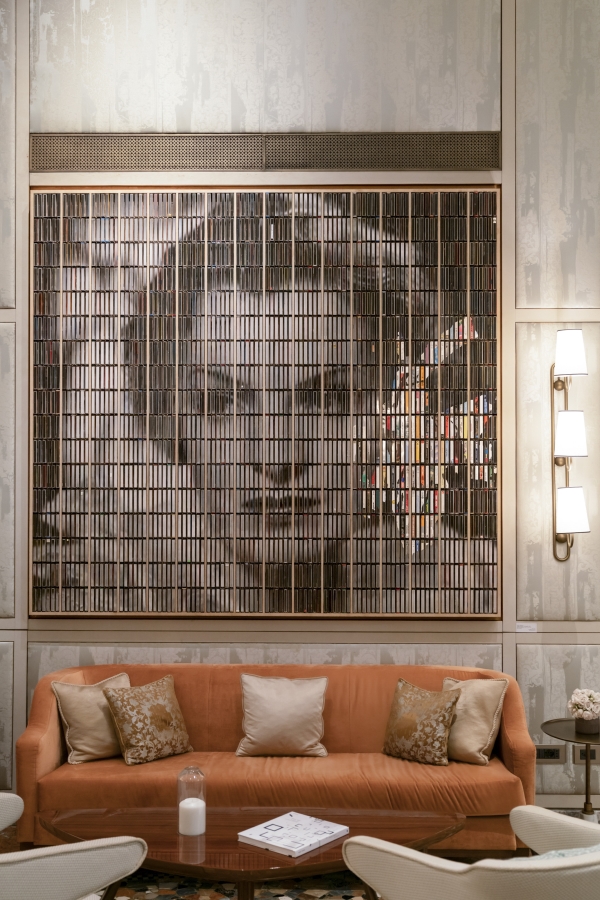
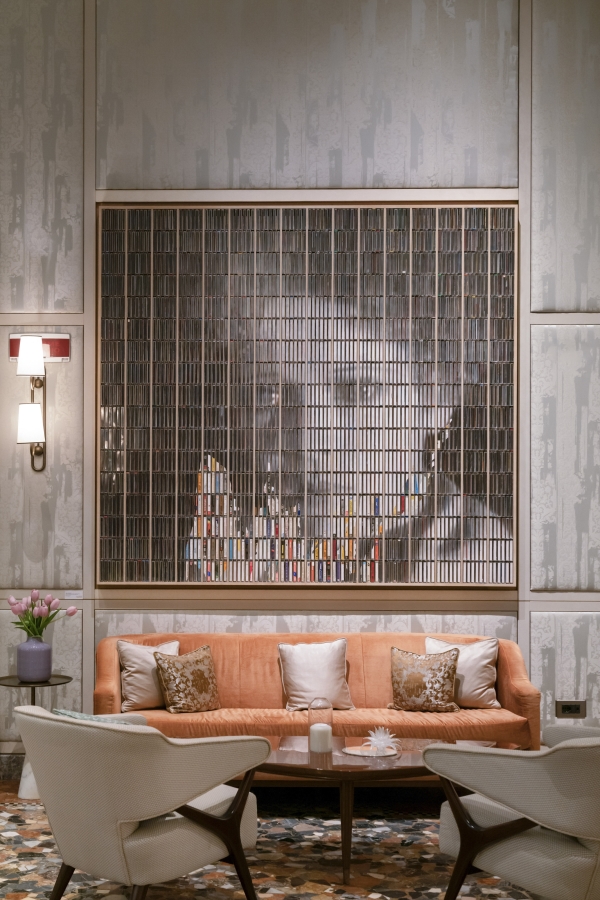
Tell us the story behind your favorite project.
One of my favorite exhibitions is “Orphische Schatten” (Orphic Shadows), presented at Almine Rech Gallery in Brussels in 2013. Based upon a work by René Daniëls “zonder titel” (1987), I covered the walls of the space with videotape strips and created niches for my paintings. The unreeled videotapes were overdubbed with Jean Cocteau’s iconic film Orphée (1949).
I first developed this type of display at an exhibition I curated from Friedrich Gräfling’s collection, “Ein weißes Feld” (A white field) in Aschaffenburg in 2012. For this exhibition, the VHS tape was derived from the scene of the burning house in Andrei Tarkovsky’s 1986 film Offret (The Sacrifice). I then hung works from Gräfling’s collection, such as a photo of the burning gas cooker by Andreas Gursky. I also hung a photo of ignited matches by Alicja Kwade in the niches of the videotape curtain.
In searching for an answer as to why I liked this particular display so much, I remembered a black and white illustration of René Daniëls’ painting in the 1992 Documenta catalogue. I must not have noticed the painting in the exhibition at the time, but even from the catalogue, it had a profound impact. I then conceived a whole exhibition at Almine Rech based on Daniëls’ painting. I recreated the space depicted within the work, but in physical space–a picture within a picture.
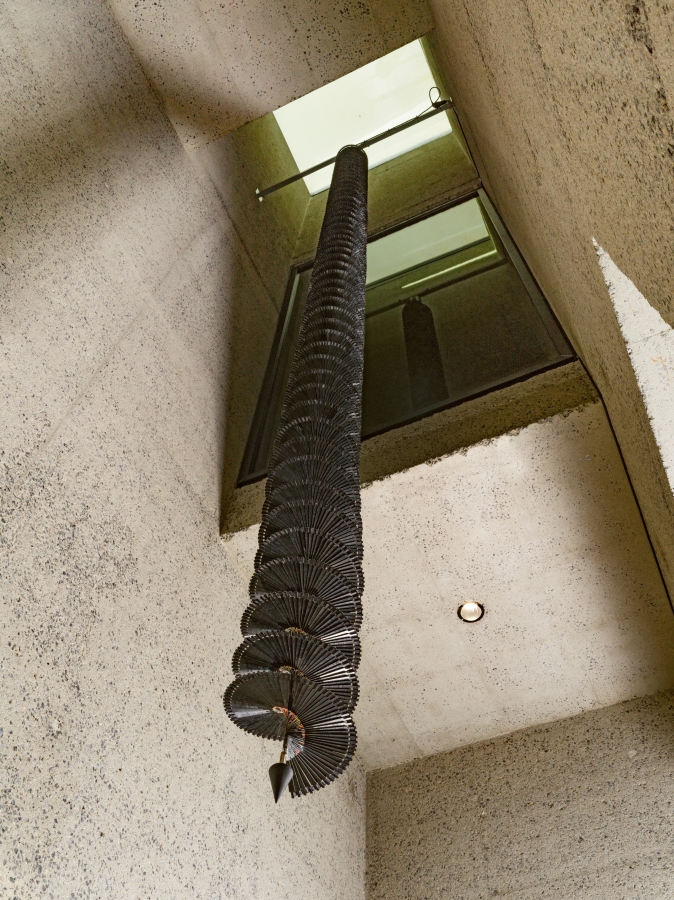
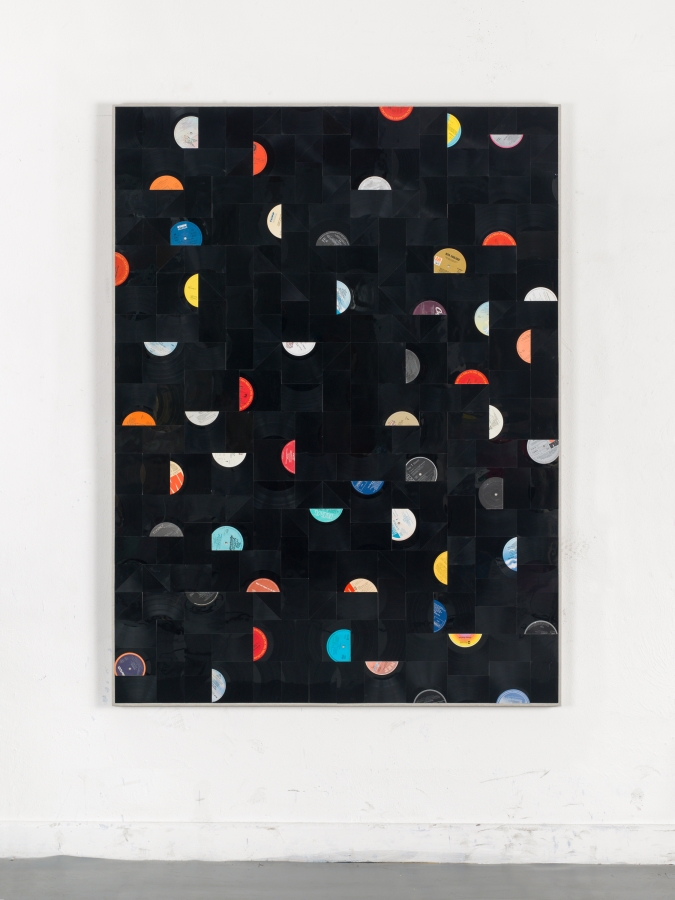
Your work is strongly influenced by cinema. Which has influenced you the most and why did you include it in your art?
One of the first cinemas I visited was the Modernes Theater in Sulzbach, my hometown.
But the real thing about cinema, for me, is not only that it is the place for film but also a place that opens one up to the whole world. By using a film or even a song, I am using a cultural production, which is part of a collective memory.
A key and moving cinematic moment for me is the scene in Bonjour Tristesse (1958) by Otto Preminger. In this scene, Jean Seberg dances with an admirer and then with her father, while Juliette Greco sings the eponymous song.
When did you get the idea to include analog technology like VCRs, cassettes and vinyl in your work?
Back in the 90s, it was still normal to use this media; we all had cassette recorders and made mix tapes for and with each other. With this in mind, the progression to VHS tape was quite obvious. It covered larger surfaces more easily, but it was also a way to also include films in my works. On the other hand, using vinyl records occurred to me in 2016 through my catalogue for the exhibition Urlaub im Urban (Vacation in the City). For the book cover, I choose to use an exclusive vinyl pressing of the previously unreleased Homeless Songs by Stephan Eicher.
What is your favorite saying or preferred motto?
“To live is to build a bridge over streams that flow away.” by German poet Gottfried Benn
Image credits: All images courtesy of the artist
Editor: Kristen Evangelista
